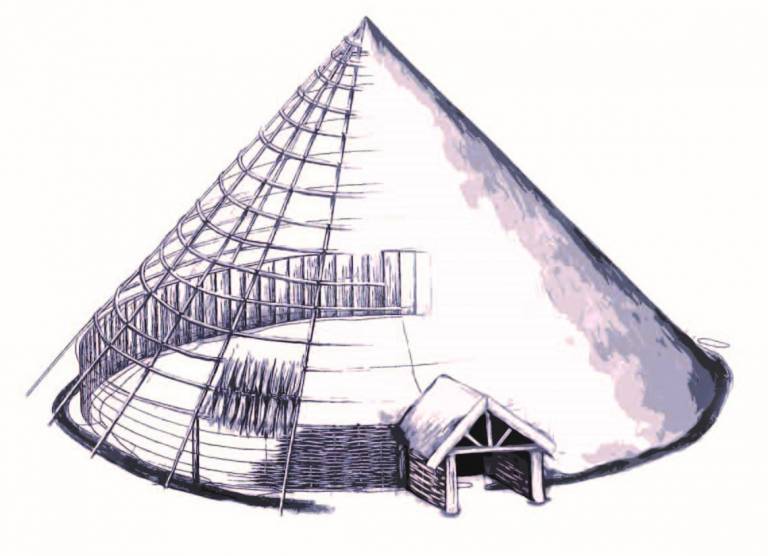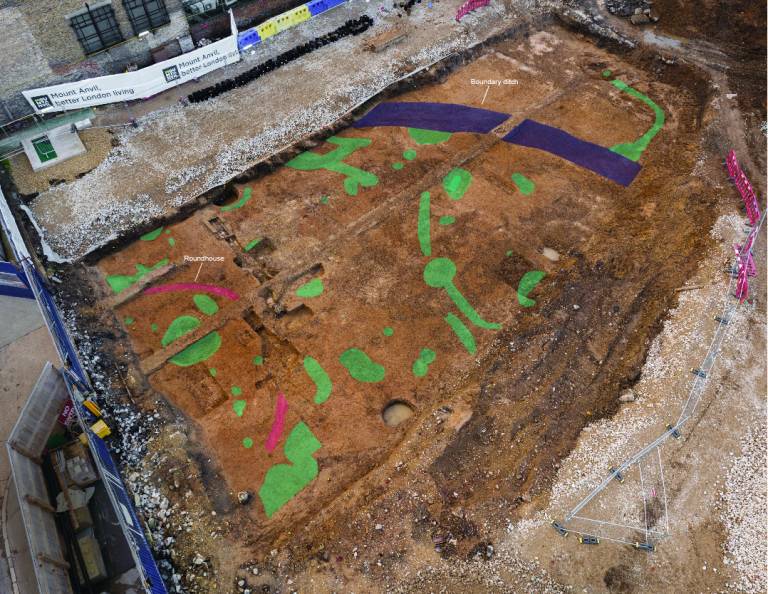Whitechapel Central: Discovering Early London
10 December 2019
Some of the most exciting archaeology at Whitechapel Central dates to prehistoric times, before the Roman city of Londinium was founded. Very little evidence for prehistoric London has been uncovered in the past, so this site could be very archaeologically important!

Prehistoric archaeology was sporadically present across the entire site, but the southwest quadrant held the main concentration of prehistoric activity. Here archaeologists uncovered the remains of a settlement with a large enclosure ditch and a ring-shape feature that could be the outline of a roundhouse.

The prehistoric settlement at Whitechapel central. Blue markings indicate the enclosure ditch, and pink the possible round house. Other prehistoric features are in green.
Archaeologists think that the house could have looked something like the one in the picture below, which is a reconstruction of an Iron Age roundhouse from Brisley Farm, Kent. The ring-shape features that remain in the archaeological record are thought to have both defined the area of the house and maybe acted as a drainage channel to stop water flooding under the walls when it rained!

A reconstruction of an Iron Age roundhouse from Brisley Farm.
At least two phases of human activity happened at the Whitechapel Central settlement because some contexts were cut through earlier features. Some of this activity has been dated to the Middle Iron Age (400-100BC) based on pottery fragments. ASE archaeologists are hoping that analysis of the artefacts and the archaeology from the settlement will help us learn about the people who used to live here. Evidence from Whitechapel Central will be compared with contemporary sites both in London and the surrounding counties to gain a better picture of the poorly understood prehistory of this area. Archaeological investigations are continuing!
You can follow regular updates about the site using the hashtag #SceneSettingE1 on Twitter, Facebook and Instagram, or visit Mount Anvil’s archaeology page.
 Close
Close

